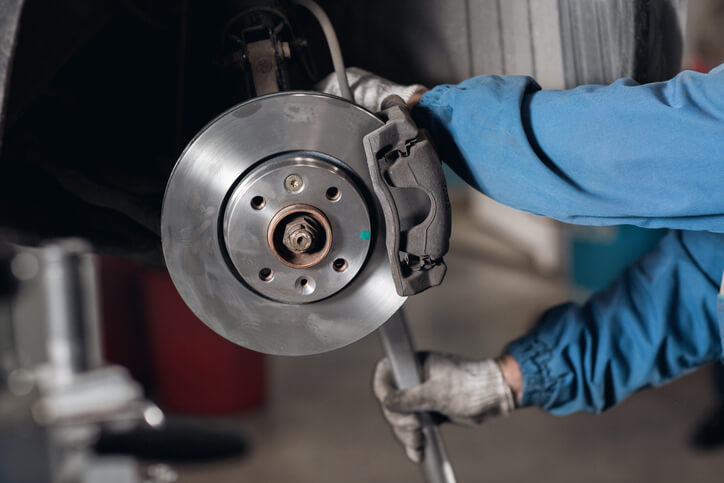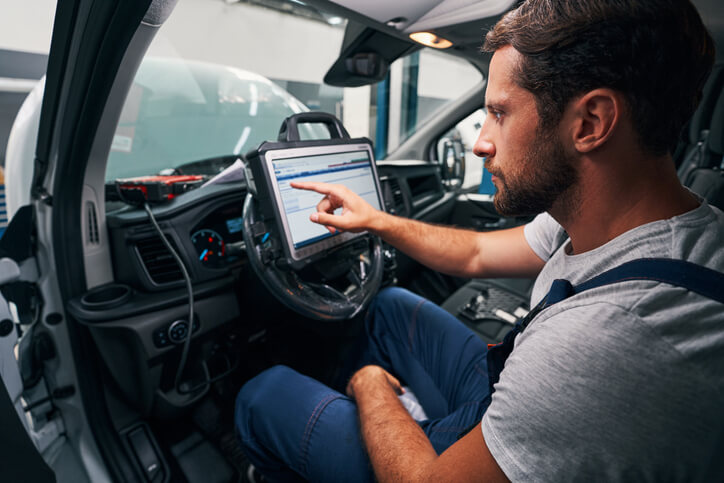Scary Sounds Under the Hood: 5 “Haunting” Car Noises Every Mechanic Should Know
It’s that spooky time of year again, and not just because of haunted houses or scary movies. Sometimes, the most chilling sounds may come from under the hood. For students in auto mechanic training, learning how to decode car noises is part of developing diagnostic skills that will serve them throughout their careers.
Let’s look at five eerie sounds every future tech at CATI School should know how to diagnose and what these sounds might signal.
1. Screeching or Squealing When Braking
This high-pitched screech can send shivers down any driver’s spine. It typically signals worn brake pads or moisture between the pad and rotor. While not always urgent, it’s often a clear sign that service is needed soon.
Students in automotive training learn how to inspect, measure, and replace brake pads while diagnosing rotor damage or caliper problems that may cause these ghostly squeals.

2. Knocking or Pinging From the Engine
This sound isn’t just unsettling. It could mean serious engine trouble. Knocking often points to pre-ignition or detonation in the cylinders, possibly due to low-octane fuel or poor combustion timing.
At CATI School, future mechanics learn engine theory and how to use diagnostic tools to detect improper fuel mixtures, faulty spark plugs, or carbon buildup that causes pinging.
3. Rattling Underneath the Car
A rattling sound while driving could be as minor as a loose heat shield, or something more serious like a damaged exhaust component. Sometimes, it’s the infamous failing catalytic converter (and yes, those get stolen too!).
Hands-on lessons in automotive training teach students how to safely inspect undercarriages, tighten fasteners, and identify potential hazards before they turn into major repairs.
4. Whining While Turning the Steering Wheel
If turning the wheel sounds like a werewolf howling at the moon, the culprit might be low power steering fluid, or worse, a failing pump.
Learning about hydraulic and electric steering systems is part of every auto mechanic training curriculum, giving students a clear understanding of what each noise may indicate.
5. Clicking or Popping When Turning
This clicking, especially while making turns, is often linked to worn CV joints or axle damage. If left unresolved, it can lead to complete joint failure, stranding the driver. CATI School’s auto mechanic training gives students real-world exposure to front-end and drivetrain systems so they can spot and fix problems before they become dangerous.

At CATI, students gain more than just technical know-how. They develop real-world confidence through shop-based learning and hands-on experience. Whether you’re training in service operations, diagnostics, or repair, CATI’s automotive programs prepare you to excel in today’s fast-paced industry and turn your passion for cars into a lifelong career.
Why These Noises Matter for Your Career
Recognizing these “scary” sounds and diagnosing their root causes helps build your confidence as a technician. Whether it’s a spooky squeal or a horrifying knock, learning how to address them is key to ensuring driver safety and vehicle reliability.
With hands-on practice at CATI School, you’ll get comfortable working on brakes, suspension systems, engines, and diagnostics, so no noise ever catches you off guard.
Are you ready to turn noise into knowledge? Explore CATI’s auto mechanic training programs and learn how to turn these haunting sounds into clear diagnoses and solutions.

